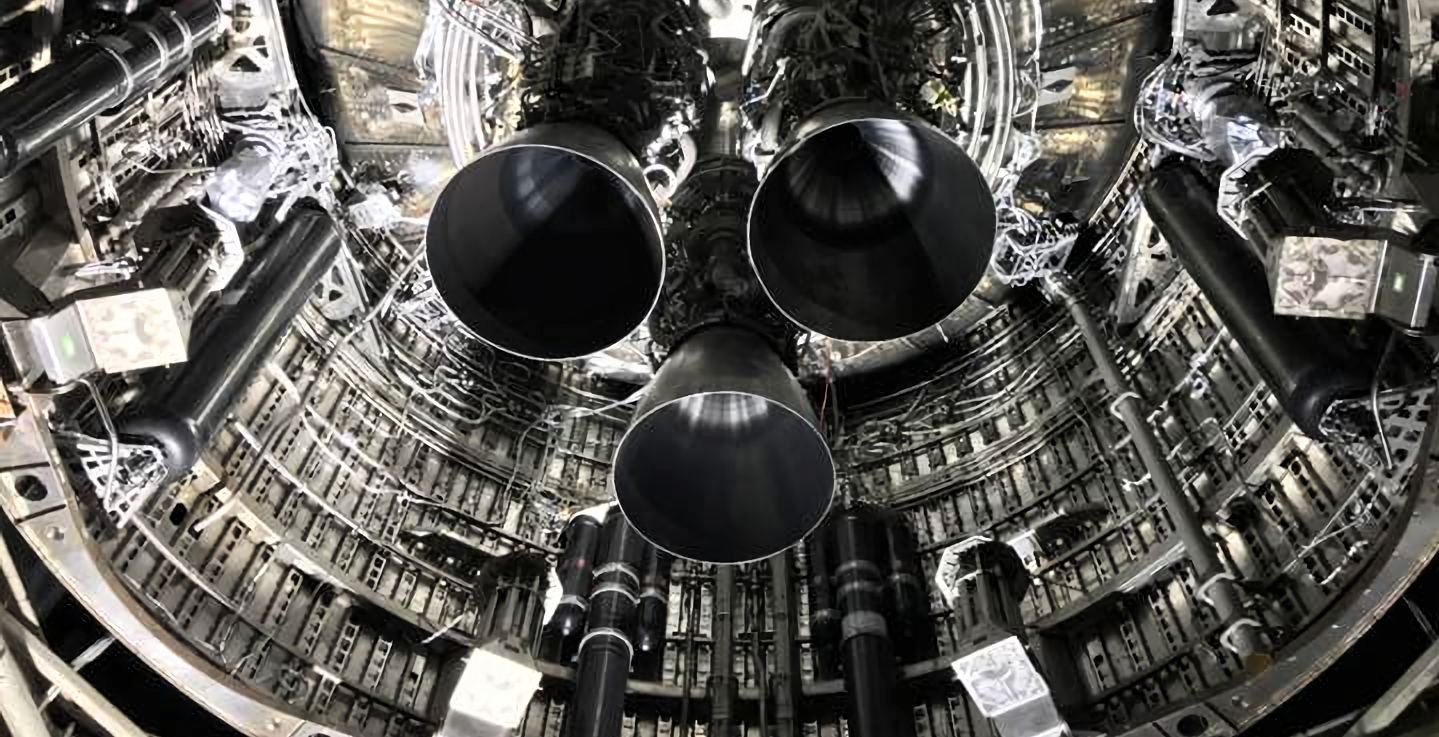SpaceX has been very busy lately with the development of its Starship prototypes. Based on recent activity at its Boca Chica facility, and recent images provided by Musk himself, it looks like they are about ready to make their biggest leap yet. Yesterday, on Oct. 14th, Musk announced that the eighth prototype of the Starship (SN8) has received the three Raptor engines it will use to make its planned 15.25 km (50,000 ft).
The addition of the three Raptor engines occurred after the SN8 underwent three rounds of cryogenic proof testing last week. The first was a success as per the test parameters, but as Musk indicated on twitter, a small leak “opened up near the engine mounts, possible due to differential shrinking.” After affecting repairs, a second and third round occurred over the next few days.
Similarly, the company tested its SN7.1 test tank to failure the evening of September 23rd, which came after two successful hop tests with the SN5 and SN6 prototypes – both of which flew to 150 m (~500 ft) and safely landed. On Sunday, after the Thrust Rams were removed from beneath the SN8’s fuselage, three Raptor engines (SN 39 models) were installed.
With these engines now integrated, it’s clear that SpaceX is gearing up for the first Static Fire test where multiple engines will be fired up simultaneously. In preparation for this, the ground crews will be running an extensive battery of tests with the SN8, which will consist of fueling tests, a spin prime test, and preburner tests.
Once the Static Fire test has been completed, the ground team will review the data to determine the performance of the engines and related systems. This will be followed by the integration of the nose cone, which is currently having its aerodynamic surfaces (its forward fins, or canards) attached – similar to how the fuselage received the two large flaps attached to its sides.
On-site footage captured by NASA Spaceflight’s Mary McConnaughey (aka. @BocaChicaGal) showed the Starship‘s nosecone getting its fins and then being moved into the facility’s Windbreak (video below). Once the entire fuselage is stacked and combined, a second Static Fire test is expected – only this time, the propellant will be kept in the Header Tank inside the nosecone.
Should everything go according to plan, the SN8 will attempt to make the highest hop test to date. So far, the highest altitude achieved by a prototype was 150 m (~500 ft), which was first achieved by the Starship Hopper, followed by the SN5 and SN6. The ~15.25 km hop test will also involve a “bellyflop” maneuver that will test the Starship’s aerodynamic surfaces.
This maneuver will begin once the SN8 reaches its peak altitude and starts descending, at which point the ground team will cut the engines and tilt the prototype’s fuselage towards the ground. The SN8 will then rely on its maneuvering fins to control its descent and its engines will be reignited at the last second so it can pull up and touch down safely.
Meanwhile, the SN9 prototype is currently located inside the Mid Bay at Boca Chica while preparations are underway to stack the SN10 in the opposite bay. The SN11 is also getting ready for stacking operations, and sections have been seen arriving at the facility that are expected to be used to fashion the SN12, SN13, and SN14 prototypes (video below).
Back in August, Musk tweeted that the newer SN40 Raptor engine is being tested at the company’s testing facility in McGregor, Texas. In addition, work is almost complete on the High Bay facility where the Super Heavy will be stacked – sections of which have also been seen around Boca Chica. This is all in keeping with SpaceX’s policy of rapid-prototyping and testing to failure, which requires that backup prototypes be in place.
It remains unclear when this high-altitude hop test will take place, but Musk has indicated several times over the past month that it will be happening soon. Musk has also said that hopes to accomplish an orbital flight with one of his prototypes next year, which will be the final hurdle before commercial space launches with the vehicle can be conducted.
Further Reading: Teslarati, NASA SpaceFlight

